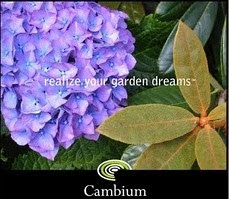 The arrival of the holiday season signals a shift in my garden. I love to leave my perennials standing through the fall. Their dried-up forms lend striking textures to the garden and provide a tangible reminder of the shift of seasons. Sedum 'Autumn Joy', northern sea oats and the second shoots of my globe thistle help the colors and textures of fall last into December.
The arrival of the holiday season signals a shift in my garden. I love to leave my perennials standing through the fall. Their dried-up forms lend striking textures to the garden and provide a tangible reminder of the shift of seasons. Sedum 'Autumn Joy', northern sea oats and the second shoots of my globe thistle help the colors and textures of fall last into December.After Thanksgiving, it is time to put the garden to bed. Get the pumpkins off the front porch, cut back the dead and dry twigs of your perennials and remove the last memories of summer's bounty. When cleaning up the garden, bring sprigs inside for holiday decorations. That monster holly bush in the neighbor's yard that is trying to steal the sun from your vegetable plot finally has a purpose! I love to cut sprigs of holly and conifers to make a door swag, a winter bouquet or even a centerpiece for my table.
December is also time to mulch and protect any boarder-line hardy plants in your garden. Dahlias can now be dug-up, divided and stored for the winter, or you can do what I do and leave them in the ground over the winter. It is a roll of the dice, but I always figure that if one or two don't come back, it's an excellent opportunity to try a new variety next season without expanding the number of different dahlias I grow into the hundreds.
If you haven't done it yet, right before the holidays is a great time to rework your container gardens for the winter. Pansies, dusty miller, cyclamen, ornamental sedges, cabbages and kale and a wide variety of small shrubs with winter interest make for a spot of color in the relatively bare winter garden.
I also always take the opportunity to brighten up the winter garden with a winter light display. The nights are so long and dark this time of year, and it's always nice to come home to a colorful garden. Displays range from the traditional garland and bows to hanging lighted snowflakes and orbs of light. Get creative! The more unique the better in my opinion.
 Though December is is filled with short days and long cold nights, there is still a bit to keep the urban gardener busy. Get the garden to bed, enjoy the holiday season and put off thinking of next spring's projects until after the first of the new year.
Though December is is filled with short days and long cold nights, there is still a bit to keep the urban gardener busy. Get the garden to bed, enjoy the holiday season and put off thinking of next spring's projects until after the first of the new year.









